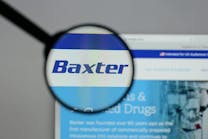Imagine the following scenario: As healthcare continues to navigate, meander and languish through the pandemic, Supply Chain faces C-suite requirements to cut a minimum of 30 percent of its operational costs by mid-year. Squeezing contract pricing won’t even put a dent in the hard-dollar savings the team needs to book. Those within the department feel that much of the identifiable fat has been stripped to the bone so that only meat seemingly remains.
Seeing how Surgical Services embraced service line management (SLM) in the previous year, cutting services that either were not profitable or that consumed too many resources, the Supply Chain leader applies the SLM framework to the department’s functions and turns to purchased services as a viable option.
The next monumental hurdle? Deciding which functions to flip externally to a contracted third party from having his or her own internal team tackling them.
Regardless of facility type, size or location, Supply Chain leaders may choose from a litany of prospects within their realm alone, hinging on their long-term goals. Supply Chain also may advise the C-suite to consider other areas as well where they may only have dotted-line influence or oversight.
The overarching strategy proffered by purchased services experts? Gather and analyze your data, evaluate third-party references and think holistically rather than incrementally.
“Regardless of a hospital system’s size, location and facility type, before tackling new savings initiatives, it is important to delve into your spend analytics, understand your data and prioritize your approach based on what the data is telling you,” Douglas indicated. “Where do the opportunities exist? Do you possess the expertise internally to drive satisfactory results or do you need help in certain categories? Are your purchased services contracts procured through a centralized process? Have you leveraged standardization across your system to the extent possible? Have you taken a lean approach to the number of vendors you utilize across a category?”
Then delve a bit more deeply.
“Once meaningful purchasing processes are put in place that leverage best practices and reflect your system’s culture, it is time to look deeper into your operation,” Douglas continued. “Based on historical success, Vizient has identified some top areas to look into, including food and nutrition services, health care technology management, human resources benefits, pharmacy benefit management and information technology. Typically, these are high-spend areas with a five-percent-to-30-percent savings opportunity within these categories. Any savings strategy developed should align with your system’s values and streamlined purchasing process to ensure that captured savings is long-standing.”
Taking the plunge
Jeffrey Ashkenase, MPA, Group Vice President, End-to-End Supply Chain, Nexera (a Premier company) asserts that third-party contracts for large operational areas can offer the best possible transparency, cost structure and quality. In fact, the three areas Ashkenase recommends purchased services to “support significant multi-year savings” includes supply chain, environmental and facilities services and information technology (IT).
While he doesn’t consider this “true outsourcing,” Ashkenase further urges providers to leverage an E-Payables vendor, such as AMEX, for example, to support discounts on vendor purchases, improved cash flow and revenue enhancement on existing volumes.
“Today, however, we’re advising providers to think broadly and holistically review spend categories ─ employing data-driven technology to benchmark against peers and identify the greatest areas of opportunity,” he noted. “By tracking and measuring spend by category, supplier and facility, an integrated spend management platform helps providers overcome the siloed nature of various contract, set and manage specific savings targets and oversee contract compliance once new agreements take effect.”
When evaluating purchased services opportunities, providers should concentrate on four key questions, according to Ashkenase.
Is the service “core” to your mission and competitive position?
Can you perform the service at a lower cost and/or higher quality than a third-party vendor?
Can your organization keep up with technical requirements, labor laws, personnel sourcing or operational improvements at the same level as vendors that have potentially larger scale and investments?
What is the opportunity cost of insourcing versus outsourcing? In other words, what else could you be doing with the funds, talent and attention that you are devoting to operating and managing an in-house operation?
Angie Haggard, COO, Ron Denton & Associates LLC (RDA) claims health systems can identify several areas that consistently generate hard-dollar savings, but those areas require collaboration and willingness to challenge the status quo objectively. Granted, savings may not be the overriding goal, she added. “Quality and patient satisfaction scores must also be weighed into the decision to outsource or insource as well as the long-term strategic and community impact,” she noted. “Most of the time, the quality and patient satisfaction gain outweigh the benefit of the cost reduction.”
Haggard pinpoints four primary targets for purchased service consideration, along with three additional prospects.
•Dietary/Food: Most organizations already have this as a purchased service, however, they are not managing the relationship, so there are opportunities for enhancement,” she indicated. Utilizing a purchased service for dietary/food will provide a foundation for continual improvement and enhancements in the type of food, food quality and efficient methods for preparing food onsite. It can also provide a revenue generating opportunities via coffee shops on-campus (without the burden of managing the detail daily operations).
• Environmental Services/Linen: This is an area that can have a significant impact on an organization’s quality and patient satisfaction scores, she noted. Utilizing a purchased service company to manage EVS/linen benefits hospitals with streamlined processes, a consistent training program for its employees and utilization ideas that could financially benefit the hospital.
• Copiers/Printers: Utilizing a team of experts that stay up to date on the latest/greatest copier/printer technology can benefit an organization, she insisted. Similar to the other two top categories, this is historically already a purchased service. However, we consistently find that the contract is not managed, nor are there quarterly business reviews conducted with the supplier.
• IT: There are multiple categories within this department to evaluate (e.g., hardware, software, telecom, cyber security, etc.). There is so much competition in this field, evaluating providers for various IT services can result in large dollar savings for a health system. In addition, evaluating lease versus buy options for employee laptops/tech is important.
•Freight/Shipping, Invoice Audit Services and Laboratory remain candidates, too, she added.
• Staffing/Recruiting: Recruiting for healthcare, both clinical and non-clinical requires a degree of expertise and network of connections to properly source and vet qualified candidates, Costantini and Slimp agreed. If you have recruiters on staff, you are likely paying them commissions and salaries, but third-party recruiters commonly work on commissions alone.
• Revenue Cycle Management (RCM): Outsourcing some or all the revenue cycle management function almost always results in a savings, they indicated. This can be anything from Billing & Collections to Claims Management or Medical Coding. This is due to the complexity of the billing processes and processes for securing reimbursement that a health system simply cannot staff the expertise required to perform end-to-end RCM processes at scale.
• Vending Services: This is one that is often overlooked because it doesn’t show up as a high spend, both insist. Why? That is because vending services should be a profit center rather than an expense. Companies like Coca-Cola and Pepsi will pay incentives and commissions to the hospital while providing the products and vending machines at no direct cost to the hospital so that they can secure exclusive rights to sell their products in a health system, they added.
“The typical process for identifying high-impact purchased services involves identifying categories of high spend and forming initiatives around those purchased services,” Slimp said. “Although vending is a purchased service, the spend is offset by the revenue that is generated. The vendors charge for the products and services, but they ‘credit’ the hospital for their commissions on anything they sell. Therefore, it will not show up as a high-spend category even if it is an area of opportunity.”
Expanding the base
But Costantini acknowledges Supply Chain’s limited influence – if any – over these areas.
“Supply chain has an indirect influence on these categories, but ultimate influence is driven by the primary decision makers in those departments,” he said. “Food Services is driven by Support Services, typically [led] by a Dietary Director or [Vice President]. Revenue Cycle Management is driven by the Finance/Accounting group, typically [led] by the CFO. Staffing by HR Services and depending upon department, driven by the HR Director, CIO, CMO and CNO depending upon area of staffing.
“Traditionally, the department heads drive control, but the pandemic has aligned hospitals, and aligned the C-suite organizationally around profitability of the hospital,” he continued. “The focus [is] to drive EBITDA [Earnings Before Interest, Taxes, Depreciation, and Amortization], especially since the downturn of elective surgeries. Purchased Services is the last bastion of significant savings [and] is providing increased influence toward Supply Chain to drive savings.”
Weighing purchased services is like balancing scales, observes Fred Crans, Healthcare Business Development Executive, St. Onge Co.
“The premise behind purchased services is that an expert in a given area will do a better job and do it more cost-effectively than an amateur,” Crans told Healthcare Purchasing News. “Healthcare organizations are experts in rendering care, not in providing support services. There are scores of services that can be bought instead of made.” Crans lists such examples as elevator maintenance, biomedical service, transport services, copy and print management, record retention and storage, waste management of all types, legal services, translation services and transcription services.
“The three that I think would win anywhere, anytime and in any size organization are Environmental Services, Food Services and Laundry/Linen Management,” he continued. “The large management companies are simply too experienced compared to self-ops. They have people, processes, technologies, data, aggregate purchasing capabilities and a willingness to go ‘at risk’ to guarantee savings. Laundry/Linen Management is extremely capital intense, and while some organizations have – and are – building their own operations, most realize very quickly that the numbers they ran in the planning process do not hold up in real life.”
Against the backdrop of the pandemic makes for an intriguing time to consider purchased services as an opportunity, advises Barbara Strain, CVAHP, a veteran value management consultant with years of experience in hospital and healthcare systems.
“Holistically, it’s a good time for every health system to take stock of 2020 to determine what worked well and why,” Strain insisted. “Did you miss the voices of staff you may have furloughed? What operational departments were not heavily relied on or what layer of administration seemed frivolous in hindsight? Could you have used outside help to fill in the gaps where needed and felt empowered to stop their services when they were not?”
Strain encourages health systems to consider “trimming the fat” that may exist in non-core business services such as Food, Environmental Housekeeping, Courier, Valet, IT or PC maintenance, Waste Management, Sharps Disposal, Recycling, Security, Parking Lot/Garage Management, Shuttles and others.
Accentuate the positive
Purchased Services
Pick List
Supply Chain executives and observers generally agree on the following as 30 notable functions for outsourcing to a third party as a purchased service.
- Biomedical Engineering
- Contract Management/Optimization and Spend Analytics
- Copy and Print Management
- Courier
- Dietary/Food and Nutrition Services
- Elevator Maintenance
- Environmental Services
- Equipment Distribution
- Freight/Shipping
- Garage/Parking Lot Management
- Healthcare Technology Management
- Human Resources Benefits
- Information Technology
- Invoice Audit Services
- Laboratory
- Laundry and Linen Management
- Legal Services
- Mail Services
- Pharmacy Benefit Management
- Record Retention and Storage
- Recruiting and Staffing
- Recycling
- Revenue Cycle Management
- Security
- Transcription Services
- Translation Services
- Transport Services
- Valet Services
- Vending Services
- Waste Management
RDA’s Haggard cautions against spreading the stereotypical stigma typically associated with purchased services.
“Some view outsourcing or purchased services as negative,” she said. “However, that is not always the case. Most of the healthcare functions that are outsourced require on-site resources that live locally. The only difference in outsourcing versus insourcing for these functions is the outsourced team gets their check from another company (aka purchased services). However, they are working side-by-side the hospital employees. In addition, outsourcing doesn’t have to be 100 percent outsourcing of a department or function. It could also include outsourcing expertise or getting a [subject matter expert’s] input on a specific project or initiative. Outsourcing or transitioning to a purchased service should be selective and should be viewed as a way for healthcare facilities to focus on their core competency – taking care of patients.”
When an organization identifies services that are not part of their area of expertise, thereby making them viable candidates for purchased service consideration, challenges can emerge, according to Haggard.
“It’s hard to have an unbiased view when you have been at one or two organizations your entire career,” she said. “Sometimes you need an outside perspective to gain insights into best practices and a different way of thinking.”
Supply Chain easily can determine what the organization values, Haggard hints.
“A good way to evaluate what should be transitioned to a purchased service is to look at your organization’s website,” she said. “What is showcased on the website as the predominant service? Taking care of patients…The most innovative IT company…Full-service dietary/EVS/linen company…Supply Chain Optimization company?
“If your organization’s website doesn’t list your function or service in your department as being the best in the industry or providing that function or service to others as a revenue source, a purchased service should be considered – even if it is only in the sense of getting outside expertise/support,” Haggard continued. “The intent is not to have all functions/roles in a hospital that are not patient care-focused transitioned to a purchased service, however. If a function/service is not part of the organization’s strategic plan, outside expertise and/or a purchased service should be evaluated.”
By and large, purchased services can benefit healthcare operations in two ways, Haggard advises. Skills and specialization represent the first.
“The companies that provide these services do nothing else but these services, so it is their core competency,” she said. “They lead their industry in creating and defining best practices. They research and identify how to continually improve the services they provide. If they do not excel in their service, they would cease to exist. Therefore, they are motivated and aligned to excel in their field and continually differentiate themselves from their competition.”
Aligned incentives represent the second.
“The purchased service company can be held accountable for their performance via service level [key performance indicators] and financial incentives for exceeding measurable goals,” she said. “In addition, a purchased service typically results in additional value-adds that the healthcare system would not have achieved on its own – i.e., training, SME support, innovation, etc. These value-adds could be incorporated into the contract, which would not be available with an employer/employee relationship.”
Keeping ops close
A strategy worth embracing stems from Strain’s personal experience.
“The best executive decision-making structure I worked within was to make sure there were no more than three levels before you connect to the top of the organization,” she recalled. “The closer to the work the better the communication, buy-in, loyalty, trust and productivity. This means you are working at the core of your business and not creating so many layers that when faced with a short- or long- lived emergency, you don’t have to look far to get into meaningful action mode. Those organizations that rolled up their sleeves, knew what to do and took early action are functioning better today and may not go back to ‘business as usual.’”
That’s why Strain believes it makes so much sense to shift non-core competency business needs out to purchased services.
“As a previous director of supply chain operations it became clear that unless we hired professional drivers, leased, purchased and maintained our own fleet of trucks, assured regulations were followed and licensing fees and liability and other insurance premiums were up to date, then we needed to outsource these services,” she said. “This can be to and from warehouses to various entities in and out of your system, experience in logistics with dropping off trailers, exchanging cabs, drivers, hauling equipment, etc. Leave it to the experts and take these expenses off the organization books. Operating costs at a purchased service level are easier to manage than what to do when the truck you need is stuck with a load on the road to your critical care hospital, and you don’t have a back-up.”
All too often Supply Chain is asked to manage a variety of ancillary departments, including mail services, linen services, equipment distribution and copy services, to name a few, according to Strain. All can be outsourced to a purchased service for one clear benefit, she suggests.
“It keeps your core supply chain to become more fully clinically integrated managing patient care needs,” she noted. “This may allow Supply Chain to do custom stocking projects for niche clinical care areas, streamline real time inventory management and storage solutions while understanding the diversity of each service type that would raise clinicians, technicians and physicians to reach levels allowing them to function at the top of their licenses.”
Strain suggests three primary factors when transferring control to a third party offering purchased services.
1. Do your homework contacting user references, both those who converted from one service to the one you are considering, and if you can find those willing to talk to you, those who converted away from the one you are considering.
2. Develop contracts with clear expectations of both parties. If it’s not documented it’s not important and include clear remediation and out clauses.
3. Monitor performance based on mutually agreed upon metrics and hold regular check-ins and business meetings to assure all is on track. hpn
Fire one, fire all and fire up every cost-containment cylinder
During a keynote back in the late 1990s, a dynamic duo of infection control nurses shared a professional anecdote with hundreds of colleagues and peers attending the Association for Professionals in Infection Control and Prevention annual conference on how they saved their healthcare organization a lot of money through considerable cost reductions.
Their secret? They outsourced themselves in what would be called purchased services today. After all, they were experts in their field and their employer needed their expertise, not the overhead.
Radical? If the audible gasps in the large conference hall were any indication, many in the audience thought so. Think about the idea of basically laying yourself off or resigning to be rehired as a contractor.
What if Supply Chain did something like that? No, not necessarily outsource yourself and your department to a supplier, but basically transform into a department-sized consulting firm.
Six purchased services subject matter experts share their impressions of the possibilities.
Eric Slimp, Purchased Services Director, TractManager
“Outsourcing the entire supply chain is a great concept with many merits. The reason a hospital chooses to outsource any function is that they do not have, or cannot get, the staffing resources, subject matter expertise or tools to execute a program to the highest degree possible. This is the case with the healthcare supply chain as well. The healthcare supply chain is a complex mechanism that cannot be fully understood by one or even a dedicated team of people. And it is becoming increasingly technology-based in order to keep pace with the demands. Therefore, the healthcare supply chain cannot simply be outsourced to a team of consultants. Instead, it requires teams of experienced individuals along with a suite of technological tools and data to support sourcing of all categories and spend segments.
“It is because of these complexities that many hospitals already outsource certain supply chain functions to third parties. Examples include benchmarking firms, consultants, group purchasing organizations and even enterprise resource planning (ERP) systems. Supply chain and revenue cycle management (RCM) mirror one another in this respect as hospitals often outsource components of RCM but not in its entirety.
“As with any purchased service, hospitals must maintain stakeholders and accountability since the new department, by definition, would be a contractor rat.”
Barbara Strain, CVAHP, Principal, Barbara Strain Consulting
“There are many examples that have stood up Supply Chain LLC models. [LeeSar/Cooperative Services of Florida] stands out as one such entity. The right leadership team with the skills of the ‘supply chain leader of the future’ is critical as well as a blend of healthcare and non-healthcare logistics and manufacturing strategies are needed to bring the level of criticality that healthcare has demanded. Economies [include] direct contracting with manufacturers, scaling capacity to produce efficiencies and take waste out of the long supply chain. They assure local availability of products either [via] self-made or stocking through demand as well as strategic purchasing.”
Jeffrey Ashkenase, MPA, Group Vice President, End-to-End Supply Chain, Nexera (a Premier company)
“Every provider is different – what works for some organizations may not work for yours. However, a successful supply chain strategy has a few things in common: A clear, incremental action plan that holds everyone accountable, an engaged leadership and clinical integration team, accurate data, and a strong governance and technology infrastructure.
“From this vantage point, full-scale supply chain outsourcing can make good sense for many healthcare providers as it allows for continuous access to third-party expertise and innovation, best practices and technology as well the ability to flex resources as the needs of the organization changes.
“Regardless of internal management versus full or partial outsourcing, providers must evolve the supply chain away from an isolated, transactional activity and toward a strategic enterprise-wide function – tied to clinical quality and outcomes. Today’s supply chain is no longer just a purchasing vehicle. It’s a key component of an organizational management strategy that should be leveraged to support the organization’s strategic goals.”
Michael Costantini, Vice President, Sales, TractManager
“A well-running supply chain is the essence of any successful business, and few industries focus more on a continuous flow of supply chain than the healthcare industry. Disruption can literally be a matter of life and death in any hospital. To say it’s critical is an understatement. Supply chain focuses on procurement, operations, distribution and integration of materials and services providing the symbiotic relationship between the purpose of the hospital and the mission to provide better health outcomes.
“Outsourcing has many advantages and helps a healthcare system focus on the core proficiencies. Hospitals can focus more on the patients’ health improvement and research by outsourcing the supply chain management functions to technology-based companies. All or part of supply chain operations can be outsourced, but without the right systems and structure, there is a risk involved. Critical factors for the success of an outsourced supply chain environment are timely information, sophisticated controls and excellence in execution.
“The task of the purchasing department is to procure the inventory at lower prices without compromising on the quality by reducing the lead times with the suppliers through competitive bidding, direct negotiation and group purchasing. Having said that, the risks of outsourcing supply chain management (SCM) must be considered. Quality may suffer due to the fact that [supply chain management] partners don’t have the extensive knowledge of your regional services. Risk is increased when the third party tries to cut corners or use cheaper materials. There may be integration challenges and the transition process can be a nightmare. It requires both parties to invest a considerable amount of time, and it also requires a strong commitment from leadership and financial backing.
“I believe the best approach is to use an insourcing-outsourcing combination but ultimately keeping the control of SCM in house and not outsourcing it. Utilizing third parties where it makes the most sense for savings is key, utilizing technology and data is paramount but ultimately, healthcare and the services hospitals provide are by human capital. There’s a certain sense of culture and ownership in patient outcomes that FTEs of an organization contribute to the organization that third parties can’t.”
Fred Crans, Healthcare Business Development Executive, St. Onge Co.
“This is not a radical idea. [LeeSar/Cooperative Services of Florida] has been doing this for over 20 years. The organization is owned jointly by Lee Memorial and Sarasota Memorial and features a full-fledged Consolidated Services Center, which includes all the elements of the traditional supply chain. The key concern is that such an operation is able to incorporate responsiveness to the clinical needs of the healthcare organization(s) it serves. [Network Contracting Officers] should always be on the lookout for ways to move variable costs to fixed costs, and LeeSar and other organizations like it have proven to be a viable option. A secondary benefit of such an approach is the fact that the [healthcare organization] retains the right to bid the service out if it is dissatisfied with performance.”
Doug Heywood, Managing Partner, Ron Denton & Associates LLC
“Outsourcing Supply Chain functions is not a new concept. However, with COVID restrictions, some supply chain functions are best insourced to the hospital. Supply chain functions that don’t require product delivery or managing on-site staff and have access to data remotely can be considered for outsourcing or remote work (e.g., contracting). Larger facilities and systems likely have the required resources to perform the necessary supply chain functions, but smaller hospitals and systems will have added financial constraints. Companies that specialize in remote supply chain support or outsourcing can spread the cost of these resources across multiple customers allowing the hospital to only pay for supply chain support as needed.
“A new area for purchased service consideration is Contract Management/Optimization and Spend Analytics. These are basic functions, however, if contracts are not managed and/or analysis not performed consistently, savings opportunities are lost and improvement opportunities become buried treasure. Contracts for major spend categories (e.g., IT, Pharma, Revenue Cycle, etc.) could be managed by remote [subject matter experts] as needed.
“With the increased demands on Supply Chain staff, there is little time to proactively evaluate contracts and/or perform predictive analytics. Most time is spent on managing the daily operations, not on proactively looking at contracts and comparing the contract to the performance. Most information systems are becoming web-based or cloud-based, and the data needed to perform the analysis is available remotely. Therefore, instead of having [X number of] FTEs, why not have resources on-demand to perform these services as needed? An unbiased company (neutral to a distributor or GPO) would be best to perform these services so their incentives are to maximize your GPO and local contracts and to analyze your data to identify trends and opportunities for the most objective and comprehensive analysis.
“The next question [is] should the supply chain functions that could be transitioned into a purchased service be managed by one company or multiple companies? What is the company’s core competency? Finding a single company to be an expert in all supply chain areas would be challenging (e.g., contracting, analytics, item master management, purchasing, etc.). However, all of these functions are connected, and therefore the companies that would be selected must also have a good cultural alignment with the health system so the service is part of the health system’s framework, not just individual companies working separately. They would need to collaborate.
“A main reason to obtain a purchased service is you want expertise in that area. There are some supply chain leaders who truly are experts in their field and who have experienced all supply chain functions across multiple facilities. There are others that are simply self-proclaimed experts. Another key benefit of transitioning to a purchased service is the company can leverage its resources across multiple clients. If a whole supply chain team just transitioned to an LLC and didn’t support multiple facilities, the economics would not benefit the health system.”
Keith Lohkamp, Senior Director, Industry Strategy, Workday
“In the midst of the COVID-19 pandemic, the role of supply chain has never been more strategic to a healthcare organization. Healthcare organizations need a strong Supply Chain leader that is part of or well-aligned to the rest of the executive team that can set and execute on a strategy that supports the mission of the organization.
“Within the context of that strategy, an assessment of skills and capabilities will help identify strengths as well as opportunities to build organizational capabilities or to look outside for support. Most importantly, the strategy should inform what supply chain capabilities are critical to own internally versus those that could potentially be outsourced.
“In many ways, we've been outsourcing supply chain roles for years, particularly in areas like distribution, sterile processing and transportation. Treating Supply Chain as a purchased service is not new, and expanding the use of external services often makes sense.
“So, does it make sense to outsource the entire supply chain? Ultimately, the answer to that question goes back to a grounding in a well-articulated strategy and organizational leadership that provides a capabilities assessment and prioritization of needs to guide decisions and evaluation of potential partners.”
Micah Parker, Principal, Vizient
“Supply Chain’s influence continues to expand well beyond basic price negotiations and movement of supplies. Healthcare supply chains need to have expertise in supplies, purchased services, clinical utilization, non-clinical utilization, shared services and so much more. During these difficult times, finding resources and investment dollars to fulfill the needs of the Supply Chain are increasingly challenging, especially when the traditional — but less efficient — ‘build it ourselves‘ approach continues to be used throughout healthcare.
“Moving Supply Chain under purchased services is not so radical an idea, but one seen as increasingly reasonable. A purchased service or ’outsource‘ model allows the consolidation of resources and expertise that can be utilized over numerous organizations. Under this model, Supply Chain professionals sharpen their expertise by negotiating the same types of agreements from various parts of the country each year as opposed to negotiating for that same product or category only once every two to three years, as is the case with many hospital organizations today.
“In a purchased services model when that expert has negotiated a deal for the hospital organization, he or she can then move on, and another expert can be brought forth for the next product negotiation. This resource pool of expertise dramatically accelerates the speed-to-value for the hospital organization.
“Supply Chain, under a well-designed purchased service model, can serve the hospital organization better than hospital employees by setting clearly defined goals and incentives for both parties. A purchased service model provides a win-win situation for the hospital organization and the Supply Chain staff. It allows the hospital organization to invest in their Supply Chain, receive good returns on the investment, while at the same time allowing the Supply Chain staff to grow professionally.

Rick Dana Barlow | Senior Editor
Rick Dana Barlow is Senior Editor for Healthcare Purchasing News, an Endeavor Business Media publication. He can be reached at [email protected].









